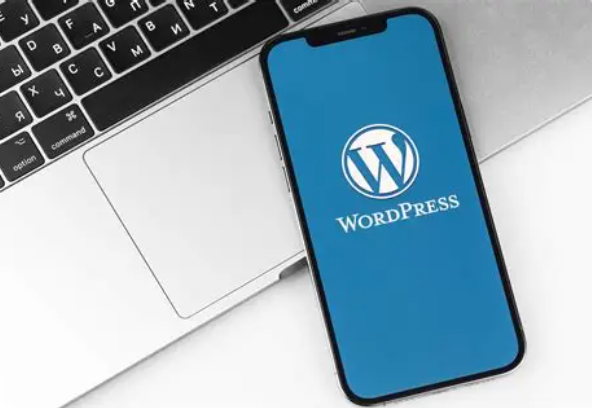In 2025 mobile optimization is not an option anymore, it is necessary. Mobile-based web traffic exceeds 60 percent; therefore, it is vital to make sure your WordPress-powered site will work perfectly fine and user-friendly on smartphones and tablets. A mobile friendly site does not only promote user experience but also contributes greatly to the SEO ranking, bounce and conversion rates.
This tutorial will show you all the steps needed to optimize WordPress to the mobile user, including best practices and useful tools to use and the best strategies to use to achieve that.
The Importance of Mobile Optimization
Mobile-first indexing is a priority of a search engine such as Google, which implies that the version of your site is used as a base one to be indexed and ranked. Unless your WordPress is mobile-friendly, you will certainly be losing traffic, interaction, and eventually profits.
The main advantages of wordpress mobile optimization:
-Improved Search Engine positions
-Increased speed of load time
-Reduced bounce rate
-Better user accessibility
-Greater conversion rates
1. Select a Mobile Responsive WordPress Theme
The best place to start in optimising your site to mobile is choosing a responsive WordPress theme. Responsive theme has an automated formatting of layout, pictures and content in relation to different screens.
Suggested Free Mobile-Responsive Themes in 2025:
-Astra
-GeneratePress
-Neve
-Blocksy
-Hello Elementor
These themes are easy to carry and allow customization and also mobile friendly in their construction.
TIP: It is good to preview your theme on mobile phones before making it final.
2. Mobile-Optimal Page Builder
Contemporary WordPress builders give you an opportunity to create distinct mobile, tablet, and desktop versions. Depending on such builder-tools as Elementor, Beaver Builder, Brizy, you have complete control over what your site will be like when viewed on a smaller screen.
Best Practices:
-Conceal or fix parts that do not scale on mobile
-Make fonts smaller to be easier to read
-Position buttons and CTA so they are easily clicable
3. Accelerate WordPress Site
Users who access the internet through mobile phones require websites that load fast. When it takes 1 second more than usual, the conversions decrease up to 7%. The following are some of the strategies that can be applied in optimizing your WordPress performance:
Key Actions:
-Caching plugins such as WP Rocket or LiteSpeed Cache
-Use ShortPixel or Smush to compress the images
-Autoptimize
-Take advantage of the CDN such as Cloudflare or BunnyCDN
4. Add Mobile Friendly Navigation
Mobile users are different with regards to the way they interact compared to desktop users. Touches should be able to work with menus, buttons, and navigations.
Suggestions:
-Apply the use of a hamburger menu
-Make certain that buttons have the size of at least 48×48 pixels
-Put your best call-to-action (CTA) above the fold
-To add a sticky mobile menu with improved user accessibility
5. Enable the Accelerated Mobile Pages (AMP)
AMP one of the Google supported projects that was created to ensure loading of content immediately on a mobile device. Although not a must in all sites, AMP has the potential to reduce load time dramatically on blogs, news websites and other content rich sites.
Recommended Plugin:
-AMP wp Accelerated mobile pages
-But remember that AMP could eliminate some design features to be faster.
6. Mobile optimized WordPress Plugins
An excessive quantity of your plugins or unfavorable-written ones may drag your mobile experience. Perform regular audit of your plugins and make sure that they are:
-Mobile-responsive
-Actively updated
-Not contradicting with your theme
To examine the effect of the plugins on loading times, use Plugin Performance Profiler (P3).
7. Mobile- First Design Philosophy
Make your WordPress page and layout mobile-first, and not as an after-thought.
Key Tips:
-Ensure forms are short and non-complicated
-Pop up should not block mobile view
-Apply big fonts that are readable
-Crop lengthy paragraphs into short and scanable paragraphs
-Use the keyword on your internal anchor text strategy as well: mobile-first WordPress design.
8. Launch Your Site in Live Devices
As much as emulators are applied, testing on the real device will provide more precise information. It is possible to test in cross-device with the help of the tools, such as BrowserStack or LambdaTest to check your WordPress site.
Also use:
-The Mobile-Friendly Test Tool of Google
-Mobile PageSpeed Insights score
9. Is mobile SEO with Schema Markup Useful
Structured data can make search engines comprehend your content, increased mobile CTR, and it may produce rich results, such as FAQs or sitelinks.
Tools:
-Rich Rank Math SEO
-Yoast SEO
-Schema Pro
-Adopt mobile optimised schema type like:
-FAQPage
-LocalBusiness
-Review / Rating
10. Constant Monitoring and Optimization
To enhance mobile UX with the help of analytics tools:
-Google Analytics 4 (GA4)
-Hotjar or Microsoft Clarity to use heatmaps
-Mobile usability with Google Search Console
-Track the bounce rates, time on site and the conversion paths specifically with the mobile traffic.
Final Thoughts
Making WordPress mobile-friendly is not a one-time job but a long-term plan that determines the success of your site in many ways. That is, the right choice of responsive theme, use of mobile-driven first plugins and performance enhancing tools count.
Mobile user experience should not only fulfill the requirements of search engines but should also serve your customers with a smooth and pleasurable experience regardless of the device they access.

